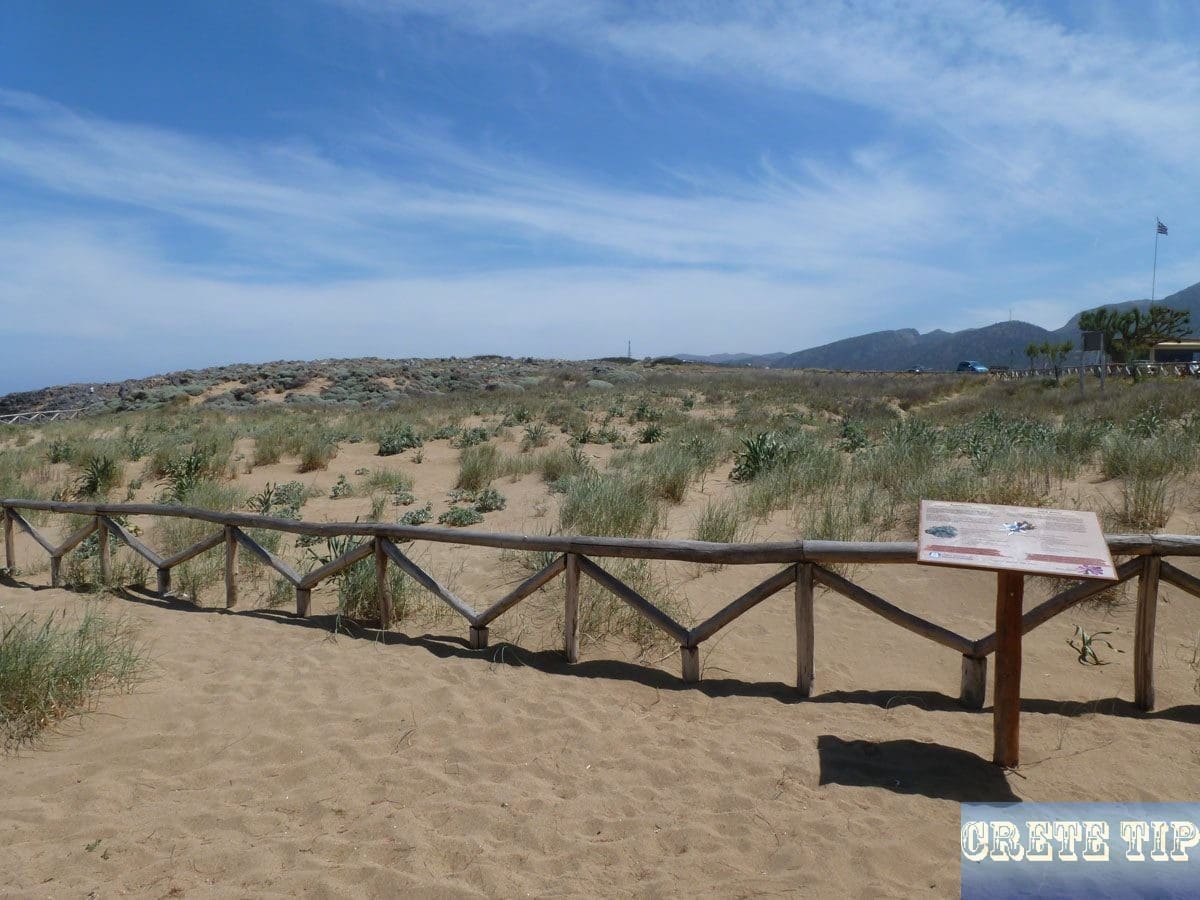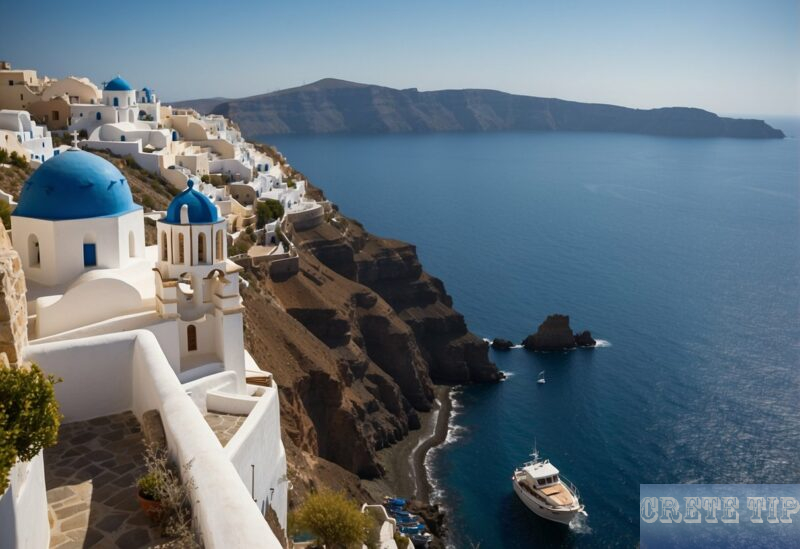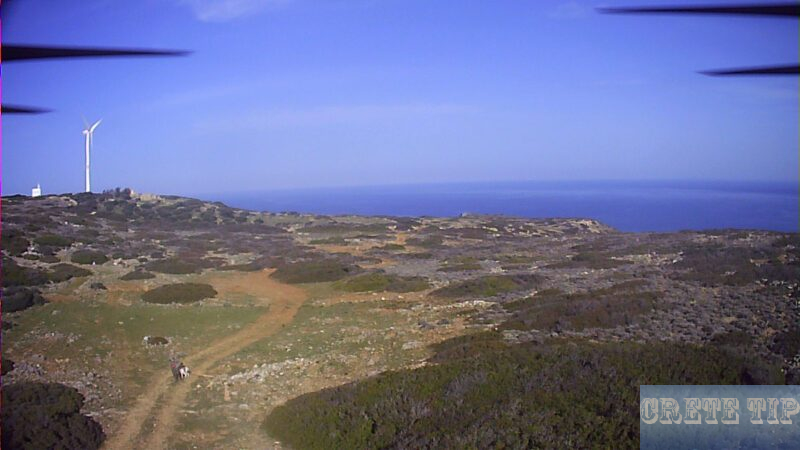The pink sand beaches of Greece are threatened by sand theft!
Summer in Greece brings tourists flocking to its famous beaches, drawn by the allure of sun-drenched pebbles, shimmering sand and delicate seashells. These natural treasures, sculpted by waves over centuries, form an integral part of the country’s coastal landscapes. However, a concerning trend has emerged in recent years, with visitors increasingly taking these mementos home as souvenirs.
This practice of removing natural elements from popular beaches is causing alarm among local authorities and environmentalists. While tourists may view it as a harmless way to preserve holiday memories, the cumulative effect is damaging fragile ecosystems. In response, some opportunistic individuals have begun selling sand and pebbles online from well-known Greek islands like Crete, Skiathos, Corfu and Mykonos, raising ethical questions about profiting from the country’s natural resources.
Pink Sands and Turquoise Waters

Crete’s western coast boasts two extraordinary beaches that have captured the imagination of travellers worldwide: Elafonisi and Balos. These natural wonders are renowned for their stunning pink-tinged sands and crystal-clear waters, drawing visitors from across the globe.
Elafonisi, a small islet connected to the mainland by a shallow sandbar, is a true paradise. Its most distinctive feature is the pink sand that gives the beach its magical appearance. This unique colouration comes from tiny fragments of red coral and shells that have been crushed by the sea over millennia.
Balos Lagoon, located on the Gramvousa Peninsula, offers a similar spectacle. Its shallow, warm waters and pink-hued sand create a dreamlike landscape that has become a symbol of Cretan beauty.
The allure of these beaches has led to their immense popularity, with many travel agencies promoting Chania as an ideal destination based almost entirely on the experience of visiting these ‘pink beaches’. However, this fame has come at a cost.
Environmental Concerns
The increasing number of visitors to Elafonisi and Balos has raised serious environmental concerns. Despite laws prohibiting the alteration of natural landscapes, there has been a troubling trend of tourists attempting to take sand home as souvenirs. This practice, if left unchecked, could have devastating consequences for these fragile ecosystems.
• Tourists often try to collect sand in:
- Jars
- Bottles
- Plastic bags
These seemingly small acts of theft can accumulate to cause significant damage over time. Both beaches are part of the Natura 2000 network, a system of protected areas across the European Union designed to safeguard rare and threatened species and their habitats.
Conservation Efforts
Local authorities have recognised the urgency of the situation and have implemented measures to protect these precious natural resources. The Municipality of Kantanos-Selino, responsible for managing Elafonisi, has taken significant steps to address the issue:
- Increased surveillance: Six dedicated staff members now oversee the beach.
- Year-round monitoring: Efforts to prevent sand theft continue throughout all seasons.
- Education: Visitors are informed about the ecological importance of the sand and the legal consequences of removing it.
- Collaboration with lifeguards: Beach safety personnel also assist in protecting the environment.
These efforts have shown some success in deterring would-be sand thieves, but the challenge remains ongoing. The global fame of Elafonisi’s pink sand continues to attract visitors who may not fully understand the environmental impact of their actions.
The Delicate Balance
The popularity of Elafonisi and Balos presents a complex challenge for local authorities and conservationists. On one hand, these unique beaches are a significant draw for tourism, providing economic benefits to the region. On the other, the very features that make them so attractive are at risk of being destroyed by excessive human interference.
Preserving these natural wonders requires a multifaceted approach:
- Public awareness campaigns
- Strict enforcement of existing laws
- Sustainable tourism practices
- Ongoing scientific monitoring of the ecosystem
The Science Behind the Pink Sand
The phenomenon of pink sand beaches is not unique to Crete, but it is relatively rare. The colouration is typically caused by a combination of factors:
• Coral fragments
• Microscopic organisms called foraminifera
• Crushed shells of marine invertebrates
In the case of Elafonisi and Balos, the pink hue is primarily attributed to red coral fragments. As waves crash against offshore reefs, tiny pieces of coral are broken off and washed ashore. Over time, these fragments are ground down into fine sand, mixing with the white quartz sand to create the distinctive pink colour.
This process is continuous but delicate. The removal of sand by tourists disrupts this natural cycle and can lead to a gradual loss of the beach’s unique appearance.
Cultural Significance
Beyond their ecological importance, Elafonisi and Balos hold cultural significance for Crete. These beaches have become symbols of the island’s natural beauty, featured prominently in tourism campaigns and social media posts.
Local legends and folklore have also grown around these sites, adding to their mystique. Some stories speak of ancient shipwrecks that contributed to the unusual sand colour, while others attribute magical properties to the pink-tinged shores.
For many Cretans, these beaches represent a source of pride and a connection to their island’s unique identity. This cultural attachment further underscores the importance of preserving these natural wonders for future generations.
The Global Context
The challenges facing Elafonisi and Balos are not unique. Many popular natural attractions around the world are grappling with similar issues of overexploitation and environmental degradation due to tourism.
Some examples include:
• Maya Bay in Thailand (temporarily closed to allow for ecological recovery)
• Boracay in the Philippines (underwent a six-month closure for rehabilitation)
• Cinque Terre in Italy (implementing visitor number restrictions)
By examining how other destinations have addressed these challenges, Cretan authorities may find additional strategies to protect their own natural treasures.
The Future of Pink Sand Beaches
As awareness of environmental issues grows globally, there is hope that visitors to Elafonisi and Balos will become more conscientious. Education and clear communication about the fragility of these ecosystems can play a crucial role in changing behaviour.
Potential future measures to protect the beaches could include:
- Timed entry systems to limit daily visitor numbers
- Designated viewing areas to reduce foot traffic on sensitive areas
- Virtual reality experiences to satisfy curiosity without physical impact
- Stricter penalties for sand removal
The allure of these unique beaches is undeniable, but their continued existence depends on the collective efforts of local authorities, visitors, and the global community to recognise their value beyond mere tourist attractions. As symbols of Crete’s natural heritage and delicate coastal ecosystems, Elafonisi and Balos deserve nothing less than our utmost care an
Lalaria Beach: A Natural Wonder

Treasures for Sale?
Lalaria Beach, nestled on the northern coast of Skiathos, is a true gem of the Greek islands. This stunning shoreline consistently ranks among the world’s top 50 beaches, captivating visitors with its unique beauty and remarkable geological features.
The beach’s most distinctive characteristic is its pristine white pebbles. These smooth, round stones are a rarity, found exclusively in this area. The name ‘Lalaria’ itself is derived from an ancient Greek word meaning ‘stone’, aptly describing the beach’s primary allure.
Over time, Lalaria’s fame has led to an unfortunate trend. Tourists, eager to take a piece of this paradise home, began collecting the pebbles as souvenirs. This practice, while seemingly harmless on an individual level, posed a significant threat to the beach’s ecosystem and natural beauty when done en masse.
Recognising the potential for irreversible damage, local authorities implemented strict measures a decade ago to protect Lalaria’s unique landscape. In 2014, the Cultural Association of Skiathos proposed special regulations to safeguard the beach. The local port authority responded by enacting a ban on pebble collection, backing it up with substantial fines. Offenders now face penalties ranging from £260 to £870, depending on the severity of the violation.
Theodoros Tzoumas, the mayor of Skiathos, has highlighted the alarming rate at which the beach was being stripped of its pebbles. To combat this issue, the following steps were taken:
- Warning signs were installed, informing visitors of the legal consequences of pebble removal.
- The Coast Guard conducts regular patrols to enforce the ban.
- Boat captains operating tours to Lalaria are required to monitor what passengers bring aboard their vessels.
An innovative solution was also implemented at Skiathos Airport. A special bin was placed where tourists can deposit any pebbles they may have taken, even at the last minute before departure. This measure has proven particularly effective, as many visitors, fearing potential checks, opt to return their ‘souvenirs’. Once the bin is full, airport staff notify local authorities, and the Coast Guard returns the pebbles to their rightful home on Lalaria Beach.
The efforts to preserve Lalaria extend beyond mere enforcement. Local organisations have launched awareness campaigns to educate visitors about the importance of maintaining the beach’s natural state. These initiatives aim to foster a sense of responsibility and appreciation for the unique environment.
It’s worth noting that Lalaria’s appeal goes beyond its famous pebbles. The beach is set against a backdrop of dramatic white cliffs, creating a striking contrast with the turquoise waters of the Aegean Sea. A notable feature is the ‘Tripia Petra’, a natural rock arch that juts out into the sea, offering a picturesque swimming spot for adventurous visitors.
Access to Lalaria is limited to boat trips, which contributes to its preservation but also adds to its allure as a secluded paradise. This restricted access allows for better control of visitor numbers and behaviour, helping to maintain the beach’s pristine condition.
The challenges faced by Lalaria Beach are not unique. Many natural wonders worldwide grapple with the impact of tourism and the desire for tangible mementos. The situation raises important questions about sustainable tourism and the responsibility of both visitors and local authorities in preserving natural heritage.
While the measures taken to protect Lalaria have been largely successful, they also highlight a broader issue. The commodification of natural resources, even in the form of seemingly innocent souvenirs, can have far-reaching consequences. It’s a reminder that the true value of such places lies in their unspoiled beauty and the shared experience of witnessing them, rather than in physical tokens.
The story of Lalaria Beach serves as a cautionary tale and a model for proactive conservation. It demonstrates how local action, when implemented decisively and with community support, can make a significant difference in preserving natural wonders for future generations.
As tourism continues to grow globally, the lessons learned from Lalaria could prove valuable for other destinations facing similar challenges. The balance between accessibility and preservation is delicate, requiring ongoing effort and adaptation.
For those planning a visit to Lalaria, it’s essential to approach the experience with respect and mindfulness. Visitors are encouraged to:
- Observe the beach’s beauty without disturbing its natural elements
- Take photographs rather than physical souvenirs
- Dispose of any waste properly
- Follow all local guidelines and regulations
By adhering to these principles, tourists can play an active role in ensuring that Lalaria Beach remains a pristine haven for years to come.
The efforts to protect Lalaria also extend to its surrounding marine environment. The waters off the beach are home to diverse marine life, and measures have been taken to prevent pollution and overfishing in the area. This holistic approach to conservation recognises the interconnectedness of coastal ecosystems.
Local schools in Skiathos have incorporated lessons about Lalaria’s unique geology and ecology into their curricula. This education helps foster a sense of pride and responsibility among the younger generation, ensuring long-term community engagement in preservation efforts.
The success of Lalaria’s conservation efforts has not gone unnoticed. Environmental organisations and tourism boards from other regions have studied Skiathos’s approach as a potential model for their own conservation strategies.
As climate change continues to impact coastal areas worldwide, the importance of preserving unique beaches like Lalaria becomes even more critical. These natural wonders serve not only as tourist attractions but also as barometers for the health of our planet’s ecosystems.
Questions About Greek Beaches

What unique features characterise Skiathos’ coastline?
Skiathos boasts diverse beaches with distinctive qualities. Many shores feature smooth white pebbles that sparkle in the sunlight. The island’s coastline offers a mix of sandy and rocky areas, each with its own charm.
Which types of stones are common on Greek island shores?
Greek beaches often contain a variety of pebbles:
- Rounded white stones
- Flat, disc-shaped rocks
- Colourful marble fragments
- Smooth sea glass pieces
Are there notable geological formations along Skiathos’ coast?
Skiathos’ shoreline includes interesting rock formations:
- Sea caves
- Natural stone arches
- Rocky outcrops
- Cliff faces
These features add to the island’s scenic beauty and provide habitats for local wildlife.
What are responsible tourism practices for pebble beaches?
To protect pebble beaches:
- Leave stones where you find them
- Use designated paths
- Avoid disturbing wildlife
- Take litter with you
- Use reef-safe sun cream
How do sand and pebbles impact coastal ecosystems?
The mix of sand and pebbles on beaches:
- Provides homes for small creatures
- Helps stabilise the shoreline
- Affects water clarity
- Influences plant growth
- Shapes the local marine habitat
Which activities suit rocky coastal areas?
Visitors to rocky beaches can enjoy:
- Snorkelling
- Rock pooling
- Photography
- Sunbathing on smooth stones
- Watching stunning sunsets




